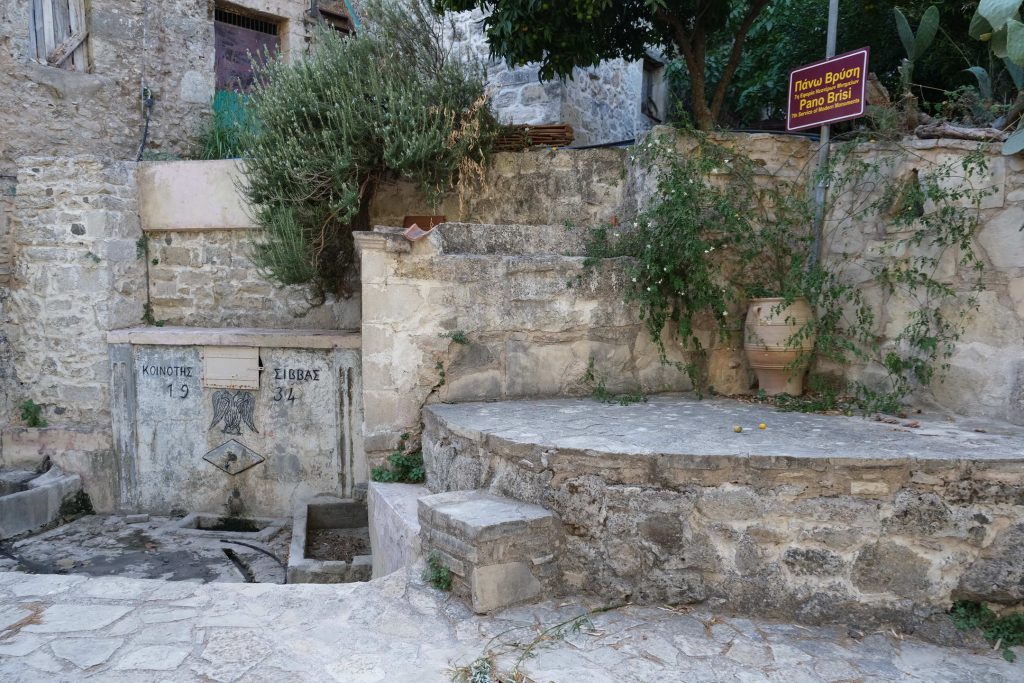Browse the narrow alleys, smell the blooming flowers in the courtyards of the houses and admire tasteful buildings of great architectural interest, such as the Byzantine church of St. Paraskevi. Relax for a while in the nearby park and listen to the sounds of nature. Cool off in one of the stone fountains of the village, where, in the past, housewives fetched water for the house, or washed their clothes. It is worth visiting one of the “rakokazana” of the area to see up close the traditional way of distilling “raki” and enjoy yourself together with the locals. In addition, the cultural association organizes a large traditional festival for the celebration of St.Paraskevi on July 26 and the feast of Klidonas on June 24 with a traditional food competition.
Monuments
- Chamber tomb Late Minoan III period (1400-1100 BC) Discovered on the west side of the village in 1941 and substantiates that the area has been inhabited since prehistoric times.
- Pano Vrisi (Upper Fountain) in the courtyard of the church of Agia Paraskevi, was built in 1934 in order to feed the two side fountains.
- Kato Vrisi (Lower Fountain). Apart from the fountain you will see basins and laundry facilities that will remind you of the way housework was done in the past.
- Korkodoulis residence. Located in the center of the settlement, a typical example of 19th and early 20th century architecture; The date of the construction (1822) is engraved.
- Lidakakis residence. Impressive building with neoclassical influences. Unfortunately, due to abandonment, much of it has been destroyed.
Monasteries – Temples
- St. Paraskevi Right after entering the village, you will find the stone built church of St. Paraskevi, which is one of the most important monuments of the first centuries of Venetian rule.
- St. George and Zoodochos Pigi was inaugurated on April 21, 1885. In the courtyard there is a tomb and a monument dedicated to Ioannis Ainikoliotis (1834-1930), a rebel leader of the Monofatsi region.
Gastronomy
In Siva the main occupation of the inhabitants is agriculture, mainly viticulture, olive cultivation, and the growing of fruits and vegetables. Visit one of the “rakokazana” of the area to see up close the way of making “tsikoudia”, to try it, but also to enjoy yourself together with the locals. Take a tour of the winery located in the village and have a memorable wine experience, tasting different varieties of organic wines.



